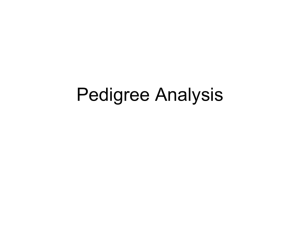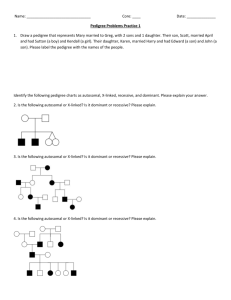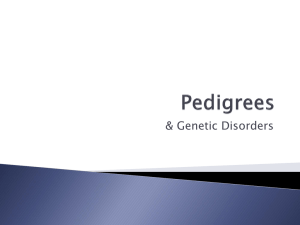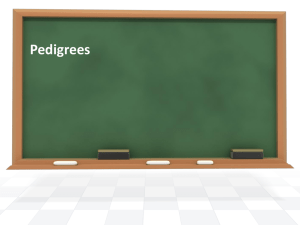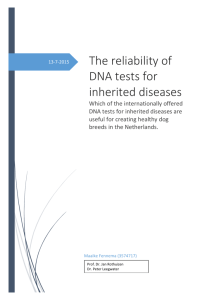Word
advertisement
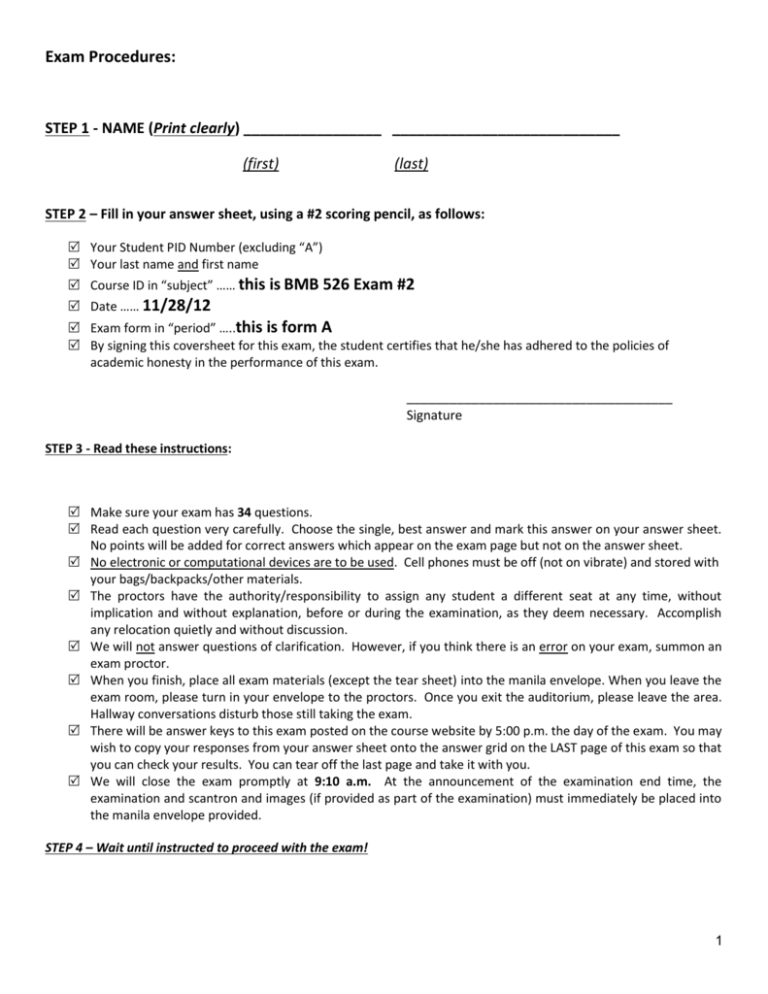
Exam Procedures: STEP 1 - NAME (Print clearly) _________________ ____________________________ (first) (last) STEP 2 – Fill in your answer sheet, using a #2 scoring pencil, as follows: Your Student PID Number (excluding “A”) Your last name and first name Course ID in “subject” …… this is BMB 526 Exam #2 Date …… 11/28/12 Exam form in “period” …..this is form A By signing this coversheet for this exam, the student certifies that he/she has adhered to the policies of academic honesty in the performance of this exam. _____________________________________ Signature STEP 3 - Read these instructions: Make sure your exam has 34 questions. Read each question very carefully. Choose the single, best answer and mark this answer on your answer sheet. No points will be added for correct answers which appear on the exam page but not on the answer sheet. No electronic or computational devices are to be used. Cell phones must be off (not on vibrate) and stored with your bags/backpacks/other materials. The proctors have the authority/responsibility to assign any student a different seat at any time, without implication and without explanation, before or during the examination, as they deem necessary. Accomplish any relocation quietly and without discussion. We will not answer questions of clarification. However, if you think there is an error on your exam, summon an exam proctor. When you finish, place all exam materials (except the tear sheet) into the manila envelope. When you leave the exam room, please turn in your envelope to the proctors. Once you exit the auditorium, please leave the area. Hallway conversations disturb those still taking the exam. There will be answer keys to this exam posted on the course website by 5:00 p.m. the day of the exam. You may wish to copy your responses from your answer sheet onto the answer grid on the LAST page of this exam so that you can check your results. You can tear off the last page and take it with you. We will close the exam promptly at 9:10 a.m. At the announcement of the examination end time, the examination and scantron and images (if provided as part of the examination) must immediately be placed into the manila envelope provided. STEP 4 – Wait until instructed to proceed with the exam! 1 1. A woman has a miscarriage at 13 weeks gestation. The placenta is noted to be large with hydatidiform changes. The karyotype of the miscarried fetus is MOST likely to be: A. 45, X B. 46, XY, der[13;21] +21 C. 47, XX, +18 D. 48, XXYY E. 69, XYY 2. An individual with which karyotype is MOST likely to be missing material from both the short and long arms of the same chromosome? A. 45, XY, der[13;14] B. 46, XX, t[3;15][p25;q11] C. 46, XY, ring(8) D. 46, X,i(Xq) E. 47, XX, +18 3. If the carrier frequency of the autosomal recessive disorder, Gaucher disease, is 1/16 in a certain population, the disease frequency is closest to: A. 1/30 B. 1/250 C. 1/500 D. 1/1000 E. 1/2000 4. Put the following relatives in the correct order in terms of degree of relationship [from closest to most distant; first to fourth degree] 1. second cousin 2. great-grandfather 3. child 4. half-sister A. 1-2-4-3 B. 2-1-4-3 C. 3-4-2-1 D. 4-3-1-2 5. What does this symbol (below) in a pedigree denote? 5 A. 5 year old boy B. 5 year old child C. 5 boys D. 5 children E. Fifth degree relative 2 6. In which situation is an individual MOST likely to be homozygous at a particular locus? A. His mother’s father is the uncle of his father’s mother B. His father and father’s mother have the same autosomal dominant condition C. His mother’s grandparents are first cousins D. His mother and mother’s father have the same autosomal recessive condition E. His father’s father is a first cousin of his father’s mother 7. A 20 year old woman starts showing signs of muscular weakness. The only relevant family history is that her brother and her mother’s brother both died in early childhood from complications associated with profound muscular degeneration. What is the MOST likely mode of inheritance of this condition? A. Autosomal dominant B. Autosomal recessive C. X-linked dominant D. X-linked recessive E. Multifactorial 8. A woman with very curly hair marries a man with straight hair. If degree of hair curl is an autosomal codominant trait, what would be the expected phenotype(s) in their offspring? A. Girls would have straight hair, and boys would have very curly hair B. All children would have wavy (slightly curly) hair C. Boys would have straight hair, and girls would have very curly hair D. Half of the children would have straight hair, half would have wavy hair E. All children would have very curly hair 9. A researcher determines that the stiff skin syndrome (characterized by thick, stiff skin and limited joint mobility) is caused by mutations in fibrillin-1. Mutations in fibrillin-1 also cause Marfan syndrome (characterized by eye abnormalities and dilated aortic root). This observation can BEST be described as an example of: A. Locus heterogeneity B. Epistasis C. Clinical heterogeneity D. Anticipation E. Reduced penetrance 10. A little girl with the Bardet-Biedl syndrome has cataracts of the eye, missing teeth, heart defects, abnormal liver function, and extra fingers and toes. Her phenotype can BEST be described as example of: A. Clinical heterogeneity B. Locus heterogeneity C. Epistasis D. Pleiotropy E. Genotype-phenotype correlation 3 11. A remote population is found to have novel phenotypes attributed to mutations in two different genes, A and B. Those with the genotype Aabb have 4-10 beige spots, those with genotype aaBb have 4-10 pink spots, and those with genotype AaBb have 30-50 black spots. This observation is BEST explained by: A. Epistasis B. Locus heterogeneity C. Clinical heterogeneity D. Variable expression E. Anticipation 12. A couple has a child with thanatophoric dysplasia, which is a skeletal dysplasia that is always fatal in the first few weeks of life. The condition is caused by heterozygosity for a mutation in FGFR3. The father of this child relates that he had a child with the same condition with his first wife, who is unrelated to his current wife. The BEST explanation for this observation is that: A. the man has gonadal mosaicism for the mutation B. the man’s parents are related to each other C. the man and his wife are likely related to each other D. the condition has variable expressivity E. each child is the result of a new mutation 13. A couple has a daughter with a severe form of combined immunodeficiency, which makes her susceptible to a large number of different infections. The mother’s brother, maternal uncle, and her sister’s son all have the same condition, with the same degree of severity. No one else has any manifestations of this condition. What is the BEST explanation for the daughter’s phenotype? A. Gonadal mosaicism B. Variable expressivity C. Allelic heterogeneity D. Locus heterogeneity E. Skewed X-inactivation 14. A couple with vision loss met at a school for the visually-impaired. Each had microphthalmia, which is underdevelopment of the eye. You know that microphthalmia is inherited in an autosomal recessive fashion. However, none of their three children has this trait. What is the BEST explanation for this observation? A. Allelic heterogeneity B. Locus heterogeneity C. Somatic mosaicism D. Variable expressivity E. Mitochondrial mutation 15. A 50 year old, healthy woman relates that her mother, maternal aunt, and daughter all developed breast and/or ovarian cancer in their late 20’s. What is the BEST explanation for this woman apparently being unaffected? A. Locus heterogeneity B. Variable expressivity C. Reduced penetrance D. Anticipation E. Epistasis 4 16. A woman with a mitochondrial disorder wants to know her chance of having a similarly affected child. Other affected family members include her brother, father, and paternal aunt. You inform her that the risk is closest to: A. 100% B. 50% C. 25% D. 4% E. 0% 17. A 25 year old man complains to you that he is gradually losing his vision. An ophthalmologist had noted that he had pigmentary clumps in his retina. When you observe him walk, you notice that he has an unsteady gait which you believe is related to degeneration of the nerves in his legs. Previously-done measurements of lactate and a muscle biopsy were both normal. His MOST likely diagnosis is: A. LHON B. MERFF C. MELAS D. NARP E. RETT 18. On a medical mission trip to Pago Pago, you meet a family with an interesting pedigree. A 70 year old woman relates that she developed muscle weakness at age 50. She has 4 children; one of the boys and one of the girls developed muscle weakness at age 35. Two of her daughter’s children had muscle weakness at age 20, whereas the son’s daughter did not develop weakness until age 35. You believe the cause of this condition is most likely caused by a(n): A. Point mutation associated with variable expressivity B. Mitochondrial mutation with heteroplasmy C. Trinucleotide repeat expansion in a non-coding region D. Interaction between multiple loci E. Balanced chromosome rearrangement 19. A couple comes to you for preconception counseling. The woman tells you that her brother has severe cognitive impairment, and had been diagnosed as having autism. Her mother had menopause at age 38, and her mother’s father was diagnosed with Parkinson disease at age 50. You believe she is at greatest risk to have a child with: A. Fragile X syndrome B. Myotonic dystrophy C. Huntington disease D. Friedreich ataxia E. Rett syndrome 20. You are asked to consult on a newborn with the combination of overlapping fingers, rocker bottom feet, and growth retardation. The mother is 42 years old, and has a history of chronic fatigue. The BEST initial test to do is: A. FISH for 7q11 B. Mitochondrial mutation panel C. Skin biopsy D. Measurement of lactate E. Routine karyotype 5 21. You read an article which states that the heritability of sports ability is .45, whereas for music ability it is .90. If a tone-deaf, female Olympic athlete marries an uncoordinated professional musician, what would you most likely see in their children? A. Boys would be musically-inclined, whereas girls would be athletically-inclined B. Boys and girls would be more likely to be musically than athletically-inclined C. Boys and girls would be more likely to be athletically than musically-inclined D. Only boys would be both athletically and musically-inclined E. Only girls would be both athletically and musically-inclined 22. The study of the interaction between an individual’s genotype and his or her reaction to a drug is called: A. Pharmacogenomics B. Medical genetics C. Sequence analysis D. Cytogenetics E. Population studies 23. Congenital heart defects are complex traits, which affect boys more often than girls. A couple with what family history would have the highest risk of having an affected child? A. They already have two affected girls B. The father has two affected brothers C. The mother has an affected sister and uncle D. They already have affected twin boys E. They each have an affected parent 24. A woman with hemochromatosis marries a man with no such history. Hemochromatosis is an autosomal recessive condition with a carrier frequency of 1/8. What is the chance this couple will have an affected child? A. 1/4 B. 1/8 C. 1/16 D. 1/32 E. 1/64 6 25. A 35 year old woman whose mother has early-onset Parkinson disease, an autosomal dominant, adult-onset disorder, wants to know her chances of developing this condition. The table below lists the chances of having manifestations at each age range. Using Bayesian analysis, determine her chance of developing Parkinson disease. Age range Chance of expressing phenotype 10-19 5% 20-29 25% 30-39 40% 40-49 75% A. 1/2 B. 3/7 C. 3/8 D. 2/7 E. 1/5 26. Which of the following statements correctly describes the process of biological selection of recombinant clones? A. Insertion of recombinant DNA into host cells. B. Use a labeled probe to find the host cell containing the recombinant DNA of interest. C. Use sets of single-stranded DNA primers to amplify regions of DNA. D. Use an ASO (allele specific oligonucleotide) probe to detect carriers of a gene mutation. E. Use antibiotic plates to detect host cells which took up a vector or a recombinant DNA 27. Which of the following karyotypes is most likely to be found in a normal human sperm? A. 22, Y B. 23, X C. 45, X D. 46, XX E. 46, XY 28. You are asked to examine a newborn infant. You note the child is short in stature (length) with a small head circumference (microcephaly), bilateral cleft lip and palate, epicanthal folds, small digits, and an unusual nose that resembles a "Greek helmet appearance". Of the following tests, which is MOST likely to identify the underlying cause of this syndrome? [FISH, fluorescence in situ hybridization] A. B. C. D. E. FISH analysis using a probe specific for telomere repeats Karyotype analysis using standard procedures and solid staining FISH analysis using a probe specific for 4p Chromosomal microarray using oligonucleotides spanning 7q FISH analysis using a probe specific for centromeres . 7 Use the information below to answer Questions 29 through 34. Michael Sichel, 17-years old, presented to the hospital emergency room with severe pain in his lower back, abdomen, and legs. He had previously been admitted to the hospital on numerous occasions for similar vasoocclusive crises. This time, he has been in pain for more than two days. The Complete Blood Count (CBC) data and pedigree data for the family are presented below. Pertinent CBC (Complete Blood Count) data: Patient Hematocrit (%) 28 WBC (103/l) 13.5 RBC (106/l) 2.8 3 platelets (10 /l) 400 reticulocytes (% of RBC) 7 hemoglobin (g/dL) 7.8 MCV (fl) 96 MCH (pg) 28.6 MCHC (g/dL) 28.5 Normal 41 - 53 4.5 - 10.5 4.3 - 5.9 150 - 350 0.5 - 1.5 13 - 17 80 - 97 27 – 33 32 – 36 Morphology --- see blood smear below Pedigree of family --- see below 8 29. From the case description, lab data, and pedigree diagram, you can formulate a hypothesis regarding the condition that is affecting Michael Sichel. Assuming complete penetrance for this condition, which of the following is the MOST likely mode of inheritance? A. B. C. D. E. Autosomal dominant Autosomal recessive X-linked dominant X-linked recessive Mitochondrial (homoplasmic) Question 30 is based on the information given below. 30. Which of the above patterns (A, B, or C) is most likely to be obtained if Southern blot analysis were performed on the DNA of Michael’s Sichel’s mother (III-3 in pedigree diagram)? 9 31. The figure below is an ASO blot indicating the three possible test results for testing for the normal and mutant alleles of the gene giving rise to Michael Sichel’s health problems. Alleles N M N M N = hybridization of probe M = no hybridization of probe E6V N = ASO probe for the normal sequence 1 2 3 M = ASO probe for the mutant sequence Of the above three possible ASO blot test results, which ones would represent the ASO test results for Michael’s father, Michael’s mother, and Michael (assume no recombinations occurred)? Father A. B. C. D. E. #1 #1 #2 #2 #3 Mother #2 #1 #2 #2 #3 Michael #3 #2 #2 #3 #3 32. Assume that I-2 is not a carrier. Individual II-1 marries a woman with no family history of this condition. The carrier risk for the general population is 1/10. What is the chance that a child of these two individuals would be affected with this condition? A. B. C. D. E. 1 in 4 1 in 20 1 in 40 1 in 60 1 in 400 33. What would be the most likely reason for the allele frequency for Michael’s disease to be higher in the African population than in the African-American population? A. B. C. D. Assortive (non-random) mating Heterozygote advantage New mutations Founder effect 34. The gene in question (giving rise to Michael Sichel’s disease) has been mapped to 11p15.5. This means that it is located: A. B. C. D. E. in region 11 on the long arm of chromosome 15 in region 11 on the short arm of chromosome 15 in region 15.5 on the short arm of chromosome 11 in region 15.5 on the long arm of chromosome 11 in region p on the long arm of chromosome 15.5 10 END OF EXAMINATION Tear off this sheet and save to check your answers. • You may write in your answer to each question on this sheet. DO NOT make any other marks on this sheet. If there are extraneous marks on this page, it will be confiscated. • Only the answer on the scantron is the official answer. We cannot use the answers on this tear off sheet to determine your grade. Please remember to: • Write in the LETTER corresponding to the form of the exam in the area titled, "Period" on the exam scantron. • Return your examination in the envelope provided to a proctor before leaving the exam room. FORM: A 1. _____ 11. _____ 21. _____ 31. _____ 2. _____ 12. _____ 22. _____ 32. _____ 3. _____ 13. _____ 23. _____ 33. _____ 4. _____ 14. _____ 24. _____ 34. _____ 5. _____ 15. _____ 25. _____ 6. _____ 16. _____ 26. _____ 7. _____ 17. _____ 27. _____ 8. _____ 18. _____ 28. _____ 9. _____ 19. _____ 29. _____ 10._____ 20. _____ 30. _____ 11
